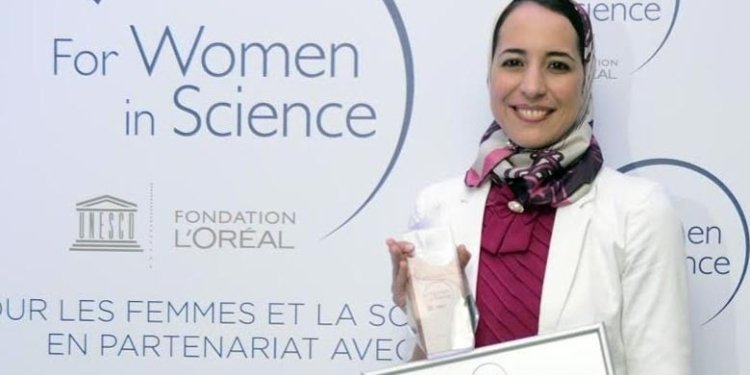How does a scientist bridge the gap between cutting-edge AI research and global education reform? Dr. Hajar Mousannif’s work answers this question, blending innovation with inclusivity. Her journey from Morocco to international acclaim showcases the power of perseverance in science and technology.
As a leading researcher, she has pioneered advancements in AI, earning patents and academic recognition. Her dual role as an advocate for STEM inclusivity highlights her commitment to empowering future generations. From humble beginnings, her career reflects resilience and vision.
Rooted in her Moroccan heritage, her work emphasizes cross-cultural collaboration in tech. This interview post delves into her groundbreaking contributions and the philosophy driving her success.
Key Takeaways
- Pioneering AI research with real-world applications in education
- Strong advocate for diversity and inclusion in STEM fields
- Holder of multiple patents and international awards
- Academic leadership shaping future tech innovators
- Cultural background influencing global research perspectives
Introduction to Hajar Mousannif

Breaking barriers in AI research, this computer science expert combines academic rigor with real-world impact. As an associate professor at Cadi Ayyad University, she drives innovation in Morocco’s tech landscape. Her credentials include a PhD in computer science and an engineering degree in telecommunications.
She designed Morocco’s first master’s program in data science and AI, equipping students with future-ready skills. Collaborations with the Moroccan government amplify her research in artificial intelligence applications.
Her accolades include the 2014 L’Oréal-UNESCO Award and the Emerald Literati Prize. These honors underscore her contributions to global STEM advancement while rooted in local educational reform.
From Humble Beginnings to Academic Excellence
A childhood spent taking apart toys sparked a lifelong passion for technology. Instead of dolls, she preferred understanding how things worked—an early sign of her analytical mind.
Early Life and Curiosity
Born into a modest family as the third of seven children, she learned resourcefulness early. Her father, a carpenter, instilled the value of hard work. All siblings later achieved professional success, proving their shared determination.
Educational Journey
She attended public schools in her home country, embracing challenges as stepping stones. After failing twice post-bachelor’s, she earned her engineering degree—defying a professor who once told her to “just get married.”
Choosing Morocco’s education system exclusively, she built resilience through its rigorous demands. This groundwork later fueled her PhD pursuits and groundbreaking research in AI.
Hajar Mousannif’s Pioneering Work in Artificial Intelligence

Transforming real-life challenges into technological solutions defines the essence of cutting-edge AI research. Her inventions blend intelligence with empathy, creating tools that adapt to human needs.
First Patent: Emotionally Smart Smartphones
Inspired by postpartum emotions, the first patent introduced smartphones that detect user moods. The AI analyzes voice tones and typing patterns to offer support. This innovation bridges mental health awareness with everyday technology.
Second Patent: Smart Chairs for Education
The second patent revolutionized classrooms with sensor-equipped chairs. These track student posture and engagement in real time. Teachers receive alerts to adjust lessons, making education more interactive.
The Moroccan Humanoid Robot
Named “Shama,” this Arabic-speaking robot promotes gender equality for the UN. Funded by a $100k US grant, it showcases how AI can drive social change. Its design reflects cultural relevance and global collaboration.
Both patents and the robot highlight a shared goal: turning theory into tangible impact. Commercial partnerships ensure these inventions reach those who need them most.
Overcoming Challenges and Breaking Barriers

Behind every breakthrough in AI lies a story of resilience against societal barriers. For women in STEM, these hurdles often include cultural expectations and workplace discrimination. Transforming these challenges into motivation requires both courage and strategy.
Facing Gender Bias
Combating gender bias in Moroccan academia meant rewriting stereotypes. A professor once advised her to “just get married” instead of pursuing engineering. Today, she mentors PhD students, though only one female candidate since 2013—a gap she attributes to systemic cultural factors.
Balancing Motherhood and Career
Juggling motherhood with groundbreaking research demanded relentless time management. Raising three children while leading labs meant prioritizing ruthlessly. Her approach? “Delegate, focus, and forgive imperfections”—advice she shares with young scientists navigating similar pressures.
These experiences fueled her advocacy for inclusive policies in tech. By sharing her story, she turns personal struggles into blueprints for the next generation.
Advancing Education and Inspiring Future Generations

Transforming classrooms through AI requires both curriculum design and cultural shifts. A pioneering master’s program in data science exemplifies this balance, blending technical rigor with inclusive policies. Taught exclusively in English, it prepares students for global collaboration while addressing local needs.
Master’s Program in Data Science
The program’s curriculum focuses on practical AI applications, from healthcare to smart cities. A deliberate 50-50 gender ratio ensures equal opportunities for female students. Alumni now work at international tech firms, proving its success in bridging academia and industry.
Encouraging Female Representation in STEM
Despite progress, challenges persist. Only one woman has completed a PhD under her supervision since 2013. Active recruitment targets girls early, but doctoral dropout rates reveal systemic hurdles. Solutions include mentorship and flexible research timelines.
By prioritizing accessibility and real-world impact, this initiative reshapes who leads tomorrow’s STEM breakthroughs.
Hajar Mousannif’s Vision for the Future
Where academia meets industry, groundbreaking ideas transform into life-changing tools. The intersection of research and real-world application drives progress in AI, from smart cities to healthcare. This vision prioritizes ethical frameworks and scalable solutions.
Bridging Academia and Industry
Collaborations between universities and tech firms accelerate problem-solving. Initiatives like Morocco’s first AI master’s program prepare students for the industry, ensuring skills align with market needs. Patents in emotion-sensing tech and smart education tools exemplify this bridging academia with commercial potential.
During COVID-19, AI optimized health measures like contact tracing and resource allocation. Government partnerships, such as road safety algorithms, prove how research can save lives. These projects highlight the power of translating theory into action.
Creating Impact Through Technology
Winning the 2020 WomenTech Global AI Inclusion Award among 2,300 competitors underscored a commitment to impact through technology. Ethical AI principles guide every project, ensuring tools respect human dignity. For example, augmented reality startups aim to revolutionize education and remote work.
Upcoming ventures focus on AR solutions for vocational training and disaster response. By addressing gaps in the field, these innovations turn problem-solving into global empowerment. The goal? A future where technology serves humanity—equitably and sustainably.
Conclusion
Public education systems can produce world-class innovators when fueled by determination and opportunity. Her journey—from local classrooms to patented AI solutions—proves that systemic barriers crumble before resilience and vision.
By championing Morocco’s first AI master’s program, she turned dreams into pipelines for global talent. International collaborations now amplify her impact, blending cultural insights with cutting-edge research.
Aspiring female scientists, take note: continuous learning bridges gaps no obstacle can block. Her legacy as a role model reminds us that problem-solving isn’t just technical—it’s deeply human.
FAQ
What inspired Hajar Mousannif to pursue artificial intelligence?
A deep curiosity about technology and its potential to solve real-world problems drove her interest in AI. Her passion for innovation led to groundbreaking patents.
How did she balance motherhood with her academic career?
She managed time efficiently, proving that dedication and support systems make it possible to excel in both family life and professional achievements.
What are her key contributions to AI and robotics?
She developed emotionally intelligent smartphones, smart chairs for education, and a Moroccan humanoid robot, showcasing her impact in the field.
Why is female representation in STEM important to her?
She believes diversity drives innovation. By mentoring young women, she helps break stereotypes and encourages more girls to join technical fields.
What role does her master’s program in data science play?
It bridges skill gaps, preparing students for industry demands while fostering research that aligns with Morocco’s technological growth.
How does she envision the future of AI in academia?
She sees AI as a tool to enhance learning, improve research efficiency, and create solutions that benefit society at large.


